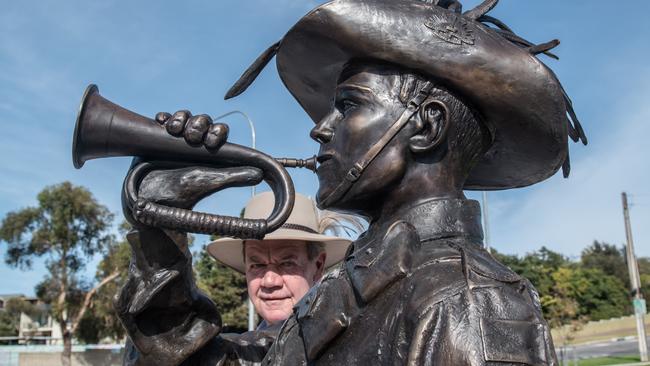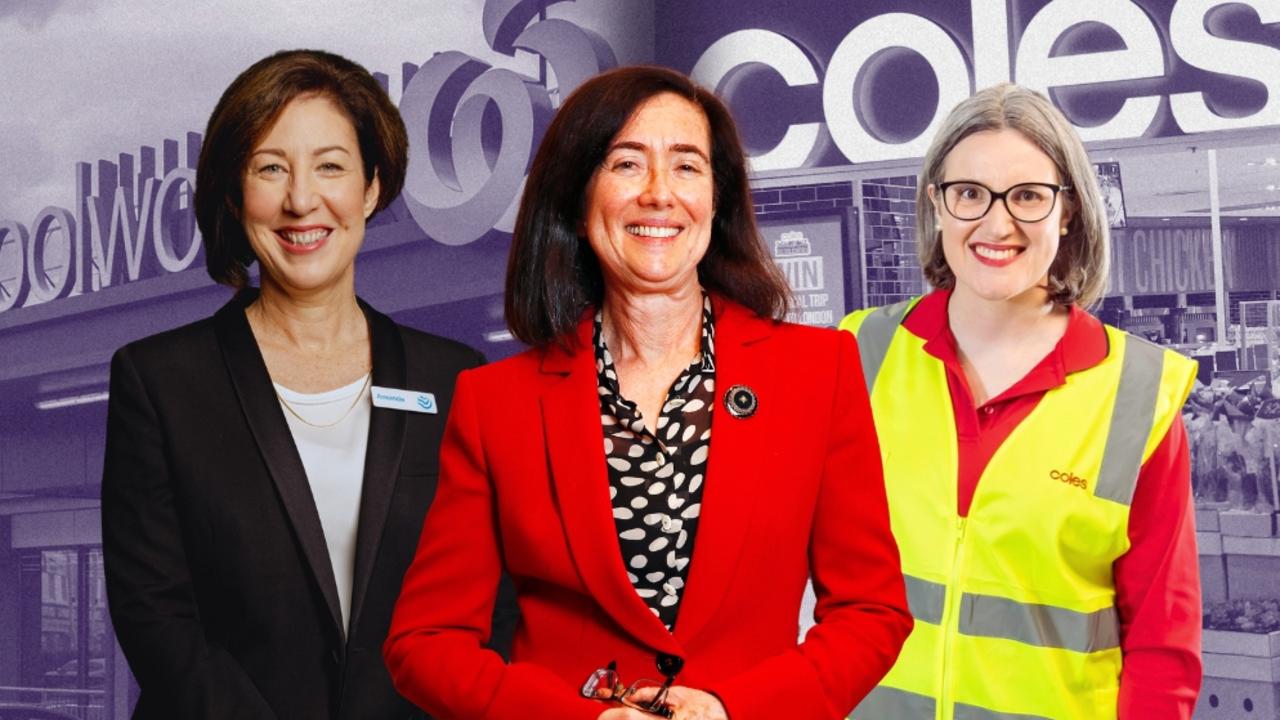Anzac Day 2016: stories of heroism and friendship
A bronze statue of a WWI bugler unveiled in Port Lincoln stands not just for the heroism of two soldiers.

A bronze statue of a World War I Light Horse bugler unveiled at the South Australian town of Port Lincoln’s dawn service yesterday stands not only for the heroism and love of two soldiers.
It also represents the friendship of a German-Australian sculptor and a local philanthropist.
It was the story of one of the last of the Anzacs, Leonard Francis Hall, which captivated sculptor Bodo Muche and his wife, Robyn, when they were commissioned to build a bronze statue of a soldier for Sydney’s Burwood war memorial to commemorate the centenary of Anzac last year.
The bugler they have created for Port Lincoln is similar, with a few distinctive flourishes, including the emu feathers which are celebrated features of the Light Horse uniform. As Hall boarded HMAT Mashobra at Fremantle in February 1915, bound ultimately for Gallipoli, he plucked an emu feather from his slouch hat and gave it to a girl in the crowd.
Four years later — after serving in Gallipoli, being wounded in the charge at Beersheba in Ottoman Syria and hand-picked by Thomas Edward Lawrence to help the British in the capture of Damascus in 1918 — Hall returned to Australia. There, a young Eunice Lydiate greeted him, feather in hand, and asked, “Excuse me, sir, would you like your plume back?”
The pair married two years later, had two children, and lived together until Eunice’s death in 1995. Hall died a few months short of his 102nd birthday in 1999.
His emu feathers are a distinctive feature of Port Lincoln’s bugler, but the life-size sculpture’s face and stature are based on another WWI soldier, Mrs Muche’s great-uncle Tasman George Vale.
When the Burwood bugler was first commissioned, Mrs Muche, who does the drawings for her husband’s sculptures, went through a box of family memorabilia her mother had left when she died.
Inside were photographs of Vale and the last letter he wrote before he was killed on the battlefield at Fromelles in 1916: 10 closely written pages to his sister, Mrs Muche’s grandmother.
“It’s quite fitting that Tasman will now be standing just near Tasman Terrace at Port Lincoln, overlooking the sea,” Mrs Muche said.
Mr Muche, 76, who grew up in Dresden during World War II, said he wanted to capture the innocence of a young man on his way to war. “When you look at a lot of sculptures now, most of them are very old soldiers,’’ he says. “I wanted him to be a young man who hadn’t been to war, but was on his way. Young, proud, innocent and patriotic.”
Port Lincoln resident Peter Teakle, 65, who made his fortune developing the Collotype wine label, met Mr Muche after he travelled to Florida in 2014 to receive an award for his sponsorship of research into black marlin.
Noticing an opal on the statue of a marlin which he had been presented as a trophy, Mr Teakle tracked Mr Muche down.
The pair have become good friends, and Mr Teakle has since commissioned more than a dozen statues from Mr Muche, including several for tuna and marlin fishing competitions he sponsors.
So enthralled was Mr Teakle with the story of Hall that he has taken to wearing emu feathers in his own Akubra and commissioned Port Lincoln’s bugler.



